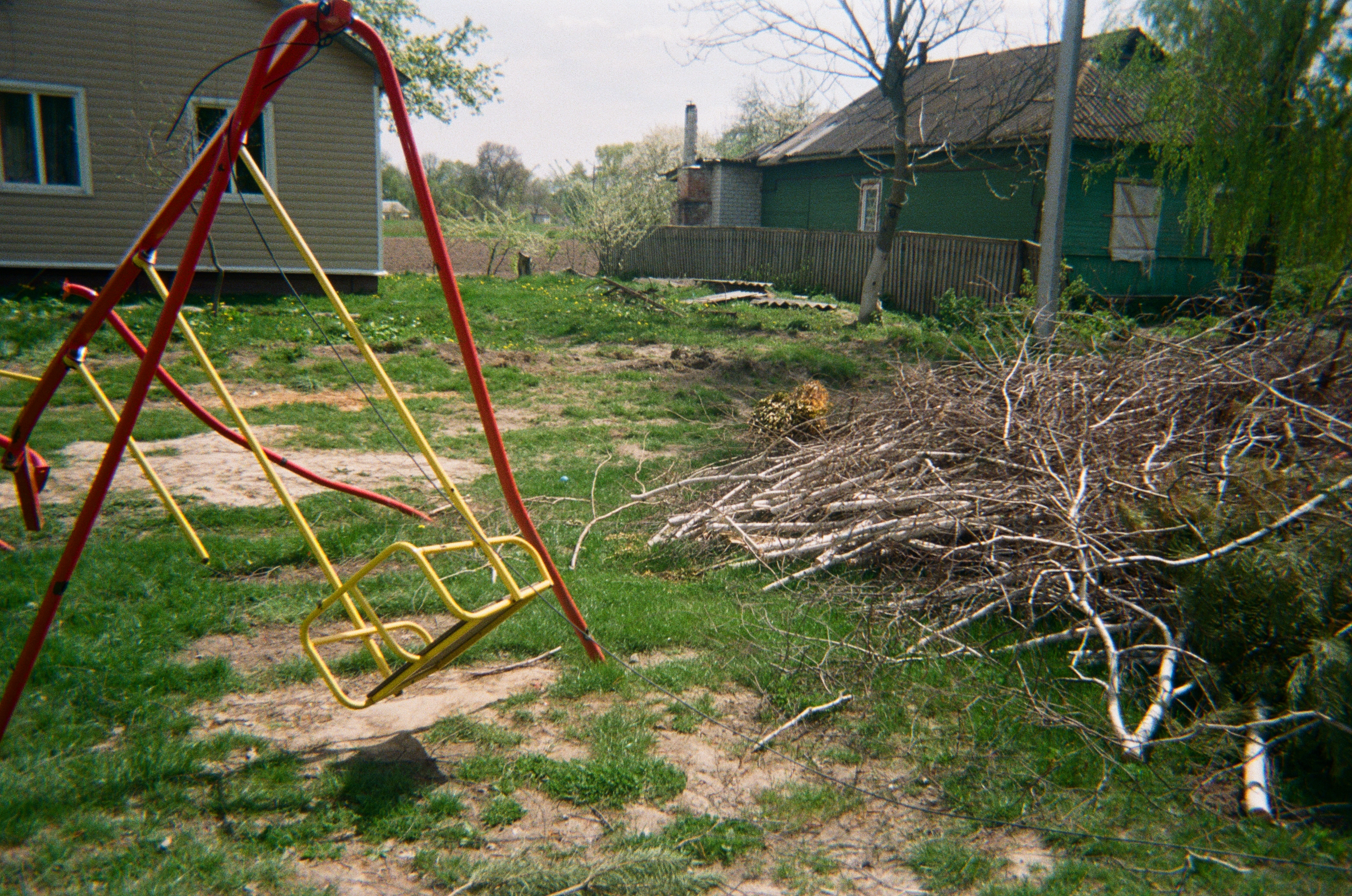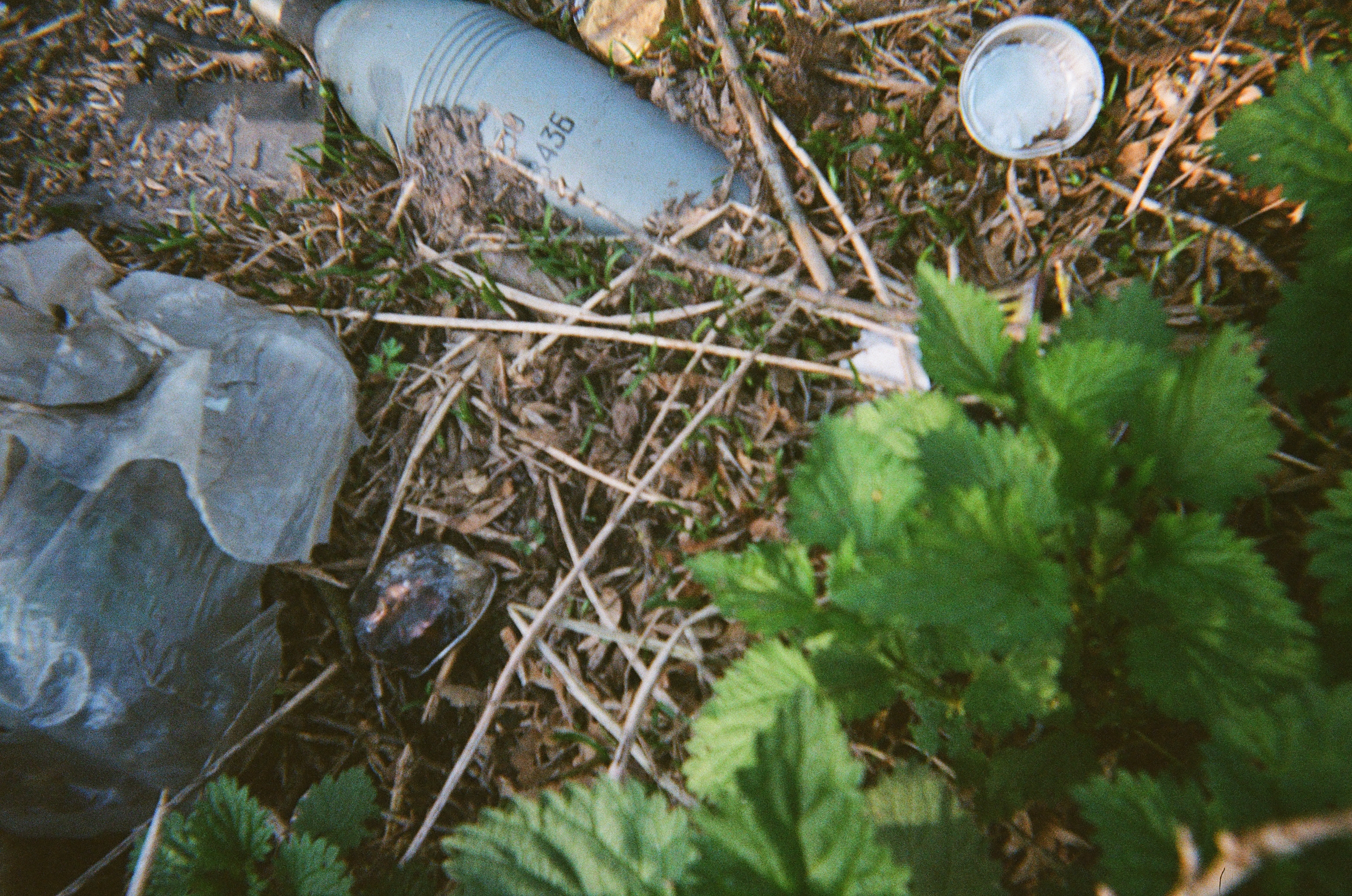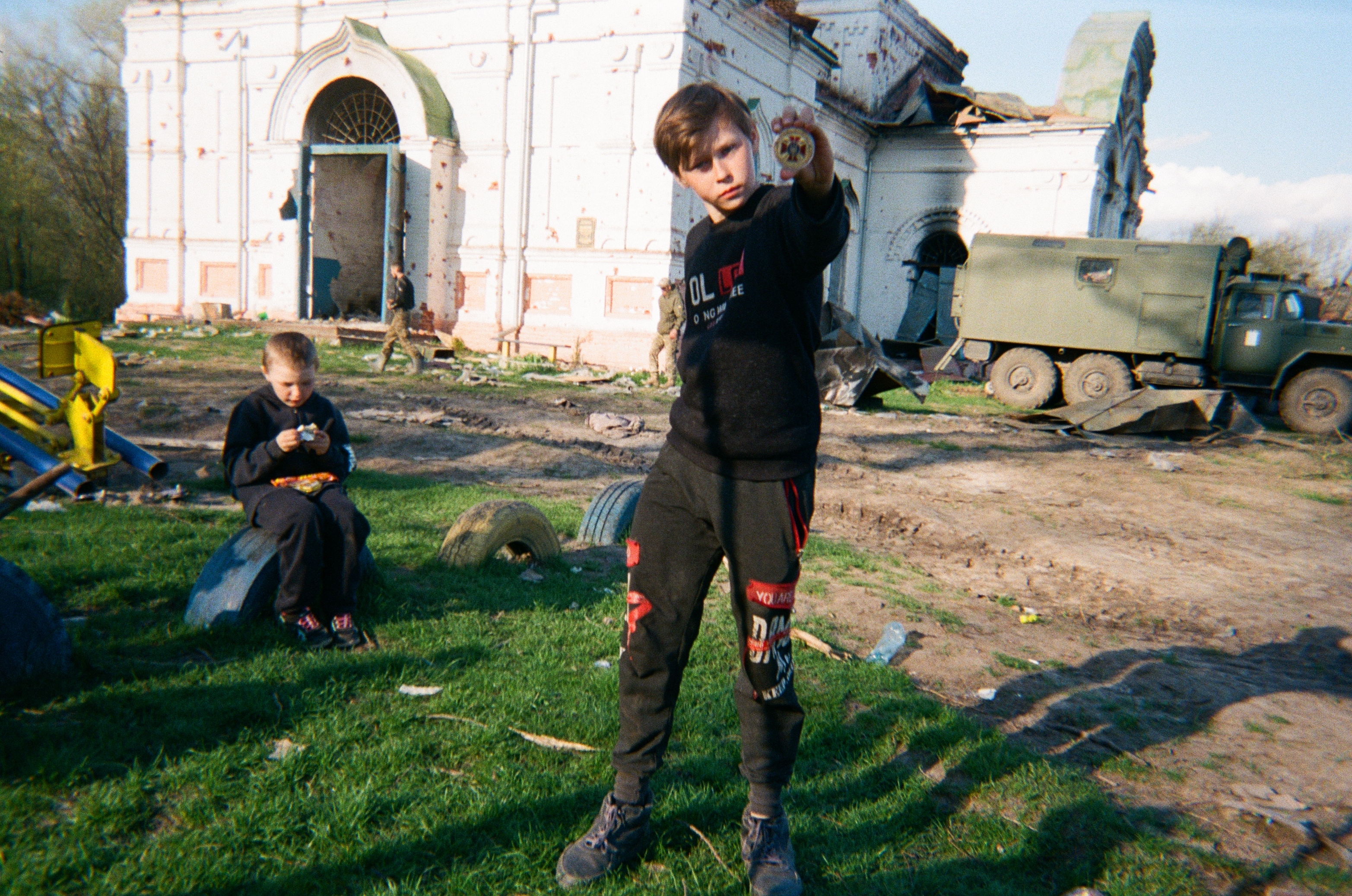Charity gives disposable cameras to Ukrainian kids to capture their lives in a warzone
Disposable cameras given to Ukrainian kids: "The children's ability to find beauty and joy in their surroundings is a testament to their resilience"

The current conflict in Ukraine began in February 2022, when Russian military forces entered the country from Belarus, Russia and Crimea.
Two years on, Oxfam America estimates that more than 10,500 Ukrainian civilians have been killed, including over 580 children. Those still alive live through constant bombardment, mines and drone attacks, leaving behind a traumatized younger generation.
Behind Blue Eyes is a photo project and charity set up by two humanitarian aid workers, Artem Skorohodko and Dmytro Zubkov.
While helping to supply de-occupied areas, such as Chernihiv and Lukashiva, with basic food and necessities, the pair found themselves forging strong bonds with the young children who lived among the wreckage.
The pair had the idea of giving disposable cameras to children in both liberated and frontline villages, taking them back after a week and organizing a charity photo exhibition with the results to encourage creativity and hope.
The conflict in Ukraine is having a devastating effect on its children, their childhoods taken from them by war. Many have been separated from their families and friends, have had their education impeded, and lived for years in cold underground bunkers.
Through Behind Blue Eyes, Zubkov and Skorohodko aim to teach these children "how to achieve dreams and goals with the power of their own creativity."
The best camera deals, reviews, product advice, and unmissable photography news, direct to your inbox!
Contrary to the single-track mainstream media coverage depicting these villages as lifeless and depleted, these photographs – taken by children as young as seven – show that there is still life in these places, despite Russia's best efforts.
The children were given the freedom to engage with the cameras however they pleased. Some documented their bombed houses and military equipment, while others took photos of flowers, sunsets, each other and pets.
"The children's ability to find beauty and joy in their surroundings is a testament to their resilience," said Skorohodko, who added that the images "speak to the vitality and resilience of the Ukrainian people."
What hit him the most, however, was that among all the photographs, the clear skies were the children's favorite subject.
“You wouldn’t see a single roll without it. They are brave enough to look up there and keep romanticizing something, which has become a symbol of threat for adults, after thousands of rockets falling down on us from these skies."
The future remains uncertain in Ukraine, and it's been challenging for charities like Behind Blue Eyes to plan ahead.
That said, alongside the photo project and delivering aid to villages, the duo also have a podcast telling the children's stories, and are now organizing a festival of creativity for children 10-14 in de-occupied villages in the south of Ukraine.
"We continue to move according to our basic idea-belief children should dream and bravely look to the future despite the traumatic war experience," Artem concludes.
For more information on the charity, or to make a donation, visit the Behind Blue Eyes website.
Take a look at our guides to the best disposable cameras, the best film cameras and the best point and shoot cameras.

After graduating from Cardiff University with an Master's Degree in Journalism, Media and Communications Leonie developed a love of photography after taking a year out to travel around the world.
While visiting countries such as Mongolia, Kazakhstan, Bangladesh and Ukraine with her trusty Nikon, Leonie learned how to capture the beauty of these inspiring places, and her photography has accompanied her various freelance travel features.
As well as travel photography Leonie also has a passion for wildlife photography both in the UK and abroad.










